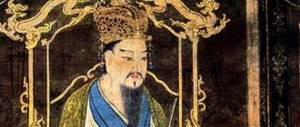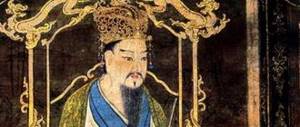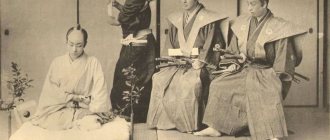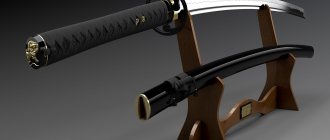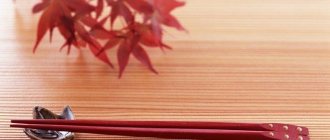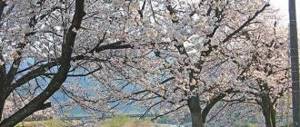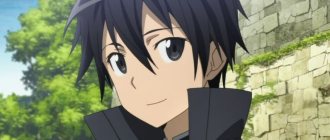Shimazu Yoshihisa
One of the most famous warlords of the Sengoku , Shimazu Yoshihisa , was from Satsuma . He was married to his aunt for some time. He started a campaign to unify Kyushu and had many victories. His clan ruled large parts of Kyushu for many years, but were eventually defeated by Toyotomi Hideyoshi . After his defeat Yoshihisa is believed to have retired and become a Buddhist monk . He died a peaceful death.
Epic Battle at Teradaya Hotel
In March 1866, a detachment of several dozen guards and sympathizers with swords and spears crept up to Teradaya's hotel, where Sakamoto continued to drink for the conclusion of an alliance in the company of Ryo and one of his associates, Miyoshi Shinzō.
The Japanese gods definitely favored Ryoma's plans: Ryo went to take an ofuro bath exactly in the room through which government agents were going to get into the hotel.
Seeing how someone was trying to make a hole in the wall with a spear, Ryo, in a raised voice, expressed to the insolent people everything that she thought about them, and then, in the clothes her mother gave birth, she rushed upstairs to warn Ryoma about the emergence of some problem.
The sight of a naked young lady brought both the guests and the attackers into a delighted stupor - thanks to which our heroes managed to throw on their robes and grab weapons: swords, Ryoma’s six-shooter Smith & Wesson and Miyoshi’s spear.
What follows is reminiscent of scenes from Kill Bill. The two heroes fiercely fought off a whole horde of enemies, killing many with revolver bullets and blades, and along the way, out of habit, destroying half the hotel. But the forces were unequal. In addition, Sakamoto unsuccessfully blocked a katana strike with an empty revolver and lost a finger. Miyoshi was eager to continue the fight, but Ryoma said that he was wounded and it was better to leave through the back door.
Hotel Teradaya
As a result, our heroes, with short dashes through other people's yards while dogs barked, managed to get to the residence of the Satsuma clan - from where they, along with the brave girl, were evacuated under the guard of one and a half hundred samurai.
Sakamoto went to the hot springs of Satsuma to rest and heal his wounds in the company of Ryo, whom he immediately married. Well, the Teradai family still runs the same hotel and proudly shows crowds of tourists the marks from bullets and blades on the ancient wooden beams.
Date Masamune
Known for his affinity for violence and lack of mercy , Dama Masamune was one of the most feared warriors of his era. Having lost his right eye as a child due to smallpox, he had to put in extra effort to be recognized as a fighter . After a series of defeats in the early days, he slowly built his reputation and became one of the most effective warriors of the time. When his father was kidnapped by his clan's enemies, Masamunne responded by killing everyone and his father during the mission. He later served Toyotomi Hideyoshi and Tokugawa Ieyasu .
“For katanas, samurai, the dust of Kyoto is dust...”
Poorly educated, warlike and fiercely eager to confirm the usefulness of his samurai, Sakamoto could not resist participating in such outrages.
Political discussions by that time were increasingly conducted in the language of fencing, and even murders took on a very noble form. Society considered hiring ninjas to be in bad taste.
The ideal political assassination was to rush alone at a villainous villain with a dozen guards and personally cut them all down.
Neither before nor after sword masters in Japan had such political weight and popularity among the people. Naturally, the fencing schools that proliferated in the country were also political circles.
Our hero stewed in this soup for several years, becoming imbued with increasingly radical ideas. After all, everything is simple - we will kill all the gaijin, and such a life will begin! Returning from the capital to his native cherry trees, Sakamoto did not scratch his head for long. Although according to Tokugawa laws, seppuku was imposed for unauthorized abandonment of clan lands, Ryoma grabbed the family sword and fled back to the capital. Where the katanas rang without interruption in the best traditions of Dumas’s novels.
Uesugi Kenshin
Known as the Dragon Ehigo , Kenshin was a fierce warrior and leader of the Nagao . He was known for his rivalry with Takeda Shingen . They fought each other for years, dueling several times. He was also one of the military leaders who resisted the campaigns of Oda Nobunaga . He was an authoritative commander. There are various stories surrounding the cause of his death.
Education
Members of the samurai class were much more than simple warriors - most of them received an excellent education. At that time, very few Europeans could read, but the level of literacy among the samurai was extremely high, and they also studied mathematics.
Bushido dictated that a samurai should strive for self-improvement in many ways, including those not related to martial arts. This is why the samurai had a significant cultural influence: they wrote poetry, painted in monochrome ink, and were experts in the tea ceremony - all of which were normal aspects of their culture. They also studied subjects such as calligraphy, literature and floristry.
Tokugawa Ieyasu
Initially, Oda's ally Nobunaga and his successor Toyotomi Hideyoshi Tokugawa Ieyasu used his brain more than his sword. After Hideyoshi's he gathered the enemies of the Toyotomi and fought against them for power. He defeated Toyotomisa at the Battle of Sekigahara in 1600 and became the first Togugawan shogun in 1603. The Tokugawa shogunate ushered in a new era of peace in Japan and ruled until 1868.
The most famous samurai of Japan
TAIRA NO KIYOMORI (1118 - 1181) Was a commander and warrior, thanks to whom the first samurai administrative system of government in the history of the Japanese state was created. Before his work began, all samurai were simply hired warriors for aristocrats. After this, he took the Taira clan under his protection and quickly achieved success in political activities. In 1156, Kiyomori, together with Minamoto no Yoshimoto (head of the Minamoto clan), managed to suppress the rebellion and began to rule the two highest warrior clans in Kyoto. As a result, their alliance turned into bitter rivals, and in 1159 Kiyomori defeated Yoshimoto. Thus, Kiyomori became the head of the most powerful warrior clan in Kyoto. Kiyomori was able to seriously advance his career. In 1171, he gave his daughter in marriage to Emperor Takakura. A little later, their first child was born, who was often used as leverage on the emperor. However, the samurai’s plans could not be implemented; he died of fever in 1181. II NAOMASA (1561 - 1602) Was a famous general or daimyo during the period when the Tokugawa Ieyasu shogun was in power. He was one of the most loyal samurai that Japanese history has known. He rose significantly through the ranks and received great recognition after 3,000 soldiers under his leadership won the Battle of Nagakute (1584). He fought with such vigor that even his opponents admired his behavior on the battlefield. The Battle of Sekigahara brought him the greatest popularity. During the battle, he was hit by a stray bullet, after which he was never able to fully recover. His squad was called the “Red Devils” for the corresponding color of the armor that the warriors wore during battle to intimidate their opponents. DATE MASAMUNE (1567 - 1636) He was ruthless and merciless, that’s what almost everyone said about him. He was an outstanding warrior and an excellent strategist, and his personality was made even more memorable due to the loss of one eye, for which Masamune received the nickname "One-Eyed Dragon". He was supposed to take the leading place in the clan after his father, but the loss of his eye caused a split in the family and his younger brother Date came to power. Already being a general, the samurai was able to gain a good reputation and was rightfully considered a leader. It was after this that he launched a campaign in order to defeat the neighboring clans. This created considerable excitement. As a result, the neighboring clan turned to the father with a request to curb his eldest son. Terumune was kidnapped, but he managed to warn his son about a similar outcome of events and asked him to kill all members of neighboring clans. Date Masamune followed his father's instructions. Although this contradicts some ideas about samurai, Date Masamune was a supporter of religion and culture. He even knew the Pope personally. HONDA TADAKATSU (1548 - 1610) Was a general and one of the Four Heavenly Kings of Ieyasu along with Ii Naomasa, Sakakibara Yasumasa, and Sakai Tadatsugu. Of the four, Honda Tadakatsu had the reputation of being the most dangerous and merciless. He was a true warrior, even in the depths of his soul. So, for example, Oda Nobunaga, who, by the way, was not very happy with his followers, considered Tadakatsu a real samurai among all the other samurai. It was often said about him that Honda bypassed death itself, since he never received serious injuries, despite the fact that the number of his battles exceeded many dozens.. HATTORI HANZO (1542 - 1596) He was the most famous samurai and ninja of the Sengoku era . Thanks to him, Emperor Tokugawa Ieyasu survived, and a little later became the ruler of a united Japan. Hattori Hanzo showed brilliant military tactics, for which he received the nickname Devil Hanzo. He won his first battle at a very young age - Hanzo was only 16 years old at the time. After this, he was able to free the Tokugawa daughters from hostages at Kaminogo Castle in 1562. The year 1582 was decisive for him in his career and in gaining a leading position - he helped the future Shogun escape from his pursuers to the province of Mikawa. Local ninjas helped him in this operation. Hattori Hanzo was an excellent swordsman and in his last years, as historical sources say, he hid under the guise of a monk. Many often attributed supernatural abilities to this samurai. They said that he could instantly hide and appear in the most unexpected places. BENKEI (1155 - 1189) was a warrior monk who was in the service of Minamoto no Yoshitsune. Benkei is perhaps the most popular hero of Japanese folklore. Stories about his origins are varied: some claim that he was born to a raped woman, while others are inclined to believe that Benkei was a descendant of a god. Rumor has it that this samurai killed at least 200 people in each of his battles. An interesting fact is that at the age of 17 he was more than 2 meters tall. He learned the art of using a naginata (a long weapon that is a mixture of a spear and an axe) and left a Buddhist monastery to join a sect of mountain monks. According to legend, he went to the Gojo Bridge in Kyoto and was able to disarm every passing swordsman. Thus, he was able to collect 999 swords. During the 1000th battle with Minamoto no Yoshitsune, Benkei was defeated and forced to become his vassal. Several years later, while under siege, Yoshitsune committed ritual suicide while Benkei fought for his master. Rumor has it that the remaining soldiers were afraid to oppose this giant. In that battle, the samurai killed about 300 soldiers, who saw with their own eyes how the giant, pierced by arrows, was still standing. So everyone was able to find out about Benkei’s “standing death.” UESUGI KENSHIN (1530 - 1578) This was one of the most powerful commanders of the Sengoku era in Japan. He believed in the Buddhist god of war, and his followers were convinced that Uesugi Kenshin was an incarnation of Bishamonten. He was the youngest ruler of Echigo Province - at the age of 14 he took the place of his older brother. He agreed to go against the greatest commander, Takeda Shingen. In 1561, the largest battle between Shingen and Kenshin took place. The results of the battle were mixed, as both sides lost about 3,000 people in this battle. They were rivals for more than 14 years, but even this fact did not stop them from exchanging gifts. And when Shingen died in 1573, Kenshin could not come to terms with the loss of such a worthy opponent. Data on the death of Uesugi Kenshin are ambiguous. Some say that he died from the consequences of heavy drinking, others are inclined to believe that he was seriously ill. TAKEDA SHINGEN (1521 - 1573) This is perhaps the most famous samurai in Japanese history. He is known, by and large, for his unique military tactics. Often referred to as the "Tiger of Kai" for its distinctive characteristics on the battlefield. At the age of 20, he took the Takeda clan under his wing, then united with the Imagawa clan - as a result, the young warlord gained power over all nearby territories. He was the only samurai who had enough strength and skill to defeat the powerful Oda Nobunaga, who was striving for power over all of Japan. Shingen died while preparing for the next battle. Some say that he was wounded by a soldier, while others are inclined to believe that the samurai died of a serious illness. TOKUGAWA IEYASU (1543 - 1616) This is the first shogun and founder of the Tokugawa shogunate. His family practically ruled the Land of the Rising Sun from 1600 until the start of the Meiji Restoration in 1868. Ieyasu gained power in 1600, three years later he became shogun, and two years later he abdicated his position, but remained in power the rest of the time until his death. He was one of the most famous commanders in the entire history of Japan. This samurai outlived many famous rulers in his lifetime: Oda Nobunaga laid the foundation for the shogunate, Toyotomi Hideyoshi seized power, Shingen and Kenshin, two of his strongest rivals, were dead. The Tokugawa Shogunate, thanks to Ieyasu's cunning mind and tactical thinking, would rule Japan for another 250 years. TOYOTOMI HIDEYOSHI (1536 - 1598) This is also the most famous samurai of his kind. He was a general and a great politician of the Sengoku era, as well as the second unifier of Japan and the man who brought an end to the Warring States period. Hideyoshi made efforts to create some cultural heritage. For example, he introduced a restriction that meant that only members of the samurai class could carry weapons. In addition, he financed the construction and restoration of many temples, and also played a significant role in the history of Christianity in Japan. Hideyoshi, despite his peasant origins, was able to become Nobunaga's great general. He failed to obtain the title of shogun, but made himself regent and built a palace. As his health began to fail, Hideyoshi began to conquer the Ming Dynasty with the help of Korea. The class reforms carried out by the samurai significantly changed the Japanese social system. ODA NOBUNAGA (1534 - 1582) He was a powerful samurai and military leader who made a lot of efforts to unite Japan. He devoted his entire life to conquest. He is remembered as the most brutal and powerful force of the Warring States era, as well as Japan's greatest ruler. It was he who changed the tactics of military affairs on the territory of the Land of the Rising Sun. Thanks to him, soldiers began to use pikes, as well as strengthen castles and use firearms. Thanks to such innovations, the commander was able to win many victories. In addition, he organized a military class system based on a soldier's abilities, background and social status, as well as achievements and merits. Nobunaga was also a true admirer of art. Famous samurai of Japan made an invaluable contribution to the formation of statehood and the formation of the country's history itself. Their names are known to practically everyone who is proud of their origin and place of birth. Samurai were a legend, despite the fact that they were ordinary people with incredible fortitude and an irresistible will to win. Samurai are the greatest warriors who wrote the history of Japan with their blood. Sources: Internet resources.
Gallery
show all photos
News from Sakhalin and the Kuril Islands on WhatsApp - constantly throughout the day.
Subscribe with one click!
If you have a topic, write to us on WhatsApp: +7-962-125-15-15
Hattori Hanzo
The leader of the Iga , Hattori Hanzo was one of the rare samurai who were also ninja warriors . He was a loyal servant of Tokugawa Ieyasu , who saved his master from death several times. His main weapon was a spear . In his older years, Hanzo became a Buddhist monk. He is one of the most famous warriors in Japanese pop culture and has inspired many warriors.
Weapon
Samurai used different types of weapons. The original weapon was a sword called a chokuto, a thin, smaller version of the straight swords later used by medieval European knights. As their weaponry improved, samurai gradually switched to curved swords, which eventually became katanas. The katana is perhaps the most famous type of sword in the world and certainly the most iconic weapon of the samurai.
The bushido code of samurai dictated that the soul of a samurai was contained in his katana, and this elevated it to the rank of the most important weapon. Typically, katanas were used in conjunction with a daisho, a shortened copy of the main sword, which was a symbol of status - only samurai had the right to wear daisho.
However, swords were not the only weapons. Yumi or bows were used just as often, as ultimately personal bravery on the battlefield came to be valued less than tactics and planning. When gunpowder was introduced in the 16th century, samurai abandoned bows in favor of firearms and cannons. Preference was given to tanegashima - flintlock guns, popular among Edo era samurai and their servants.
Takeda Shingen
Often called the Tiger Kai , Takeda Shingen was a fearsome warrior as well as a poet. He fought in numerous battles. At the fourth battle of Kawanakajima , he faced his rival Uesugi Kenshin in a one-on-one battle. He was one of the few warriors who succeeded against Oda Nobunaga and had the opportunity to stop him. However, Shingen died under mysterious circumstances in 1573, after which Nobunaga consolidated power.
From moonshiners to samurai
Many of the brightest figures of the Meiji restoration era, that is, the overthrow of the shoguns and the return of power to the emperor, came from “simple frogs” - from the most humble samurai, or even from peasants. Half a century before his birth, our hero’s family received the status of goshi, low-ranking samurai, for their success in the production and trade of sake. In order to distinguish all sorts of moonshiners from real samurai with a pedigree, goshi were not even allowed to wear umbrellas and fashionable split socks. Young Ryoma, whose name translates as “dragon horse,” became the fifth child in the family.
The structure of the family of samurai moonshiners Sakamoto roughly corresponded to the scheme of Russian fairy tales: the eldest, smart, was a fellow, the hope and support of the family, whose socially useful business he inherited. Three sisters - neither this nor that.
The younger one was, um...
He barely mastered reading and writing and read Japanese for a long time, so that those around him risked immediately committing ritual suicide by facepalming. Along the way, the hero showed much more interest in drinking sake than in its production and sale. The young man compensated for his lack of knowledge and perseverance with a passion for fencing. That’s why I went to study at one of the capital’s fencing schools.
Honda Tadakatsu
Also known as the "Warrior Who Transcended Death" , Honda Tadakatsu was one of the most brutal warriors Japan has produced. One of the Four Tokugawa , he fought in over hundreds of battles and was not defeated in any of them. His main weapon was a spear known as the Dragonfly cutter , which caused fear in every opponent. Tadakatsu fought in the decisive Battle of Sekigahara , which led to a new era in Japanese history.
Is it commerce?
It’s as if Ryoma has been replaced. The sword-wielding lover, who could barely read, buried himself in books, especially gaijin ones, and put all his efforts into developing the naval school and shipyard created by Katsu in Kobe.
In his letters, Sakamoto does not spare epithets addressed to gaijins and their accomplices, but now he sees the path to saving Japan solely in surpassing foreigners in their science.
Ryoma added a Smith & Wesson revolver to the traditional two swords, and instead of wooden geta he began to wear comfortable American boots - since the shogunate forbade his family from wearing fashionable samurai split socks.
At the same time, Sakamoto becomes imbued with Western ideas and becomes a supporter of the abolition of the class system: after all, every Japanese is a samurai in spirit!
When Katsu, who became Sakamoto's mentor, fell into disgrace, Ryoma created a shipyard, where he applied the family commercial talents and the latest Western ideas. The base was the port of Nagasaki, the personnel core was 20 ronin from the Katsu fencing school, who became sharply interested in issues of maritime trade. And the main partner is Scotsman Thomas Glover. This gentleman was experienced not so much in trading matters as in the smuggling of modern weapons and other matters of a confidential nature - which is what Sakamoto’s “trading company” was mainly involved in. For trade and more, Kaientai purchased from Mr. Glover the steamer Union, renamed Otcho-maru.
Kaientai, Ryoma third from left, 1867
However, Sakamoto also used ordinary sailboats. A sad and instructive story happened to one of them. Daimyo (lord) Kii also bought a steamship.
Anticipating the exploits of players in World of Warships with increased profundity, the brave sailors of Kiya, on their first trip to sea, gave full speed ahead and began to demolish everything that did not have time to move off course with a dashing “ololo”. One of the sailing ships “Kaientai” did not make it, not expecting such cretinism.
Sakamoto was extremely outraged by the loss of the ship, part of the crew and 400 smuggled rifles and, being a modern man, filed a lawsuit. But the Kiya authorities, with a dashing and foolish appearance, declared that the courts are for long-nosed gaijins and traitors to the spirit of Yamato, and a samurai in his own garden is always equal to a governor.
Sakamoto shrugged, scratched his head, and composed several offensive songs about Daimyo Kii and his sea deer. The songs were picked up by the people, and soon they were sung completely irreverently, first in Nagasaki, and then the memes reached Edo. From this loss of face, Daimyo Kii at the same time lost his appetite and sleep and finally paid compensation to the wit. Otherwise he’ll come up with something else that’s offensive.
Miyamoto Musashi
The most famous samurai warrior for many years, Miyamoto Musashi was one of the greatest swordsmen that Japan has ever lived. His first duel was at the age of 13 . He fought in the battle between the Toyotomi against the Tokugawa , on the Toyotomi side, which would eventually be defeated. He later traveled throughout Japan, winning over 60 duels and never losing. Musashi's most famous duel took place in 1612, in which he fought and killed Sasaki Kojiro In subsequent years, he spent more time composing and wrote The Book of Five Rings, which details various sword fighting techniques.
Ultrapatriot Games
It must be said that fencing became extremely popular in those years. The reason was valid. Black steamships with the Stars and Stripes loomed off the coast of a country closed for two and a half centuries. The brave Yankees offered the islanders free trade. And since trading with foreigners was strictly prohibited under the laws of the Tokugawa shogunate, the Americans supported freedom of trade with volleys of naval guns. The Japanese were terribly offended, but the American guns were too convincing an argument.
Young Sakamoto Ryoma (left)
While the shogunate officials were trying to somehow get out, tens of thousands of young samurai rushed to learn fencing.
After all, hurray, war is upon us for the first time in 200 years! We will drive out the damned barbarians with the strength of Yamato's spirit and the sharpness of our katanas!
Blood flowed on the streets of Edo and Kyoto: d'Artagnans in kimonos chopped down "traitors" from among the officials and "damned foreign barbarians."
As often happens, violent ultra-patriots turned out to be more useful to the enemies of their country. The more the radicals cut down the foreigners, the more concessions the shogunate had to make to the “long-nosed barbarians.” And the more the shogunate “gave free rein to the gaijins,” the more the young patriots were eager to cut them down. And at the same time, overthrow the Tokugawa shogunate, which “sold itself to the barbarians,” and return power to the emperor, a descendant of the gods.
The chaos grew worse, the police fled, screaming that they had not signed up to catch sword masters - it was better to be hara-kiri. In the end, exactly the same enthusiasts with katanas began to fight for the shogunate. This did not add order to the country.
Toyotomi Hideyoshi
Oda Nobunaga's successor , Toyotomi , was a powerful ruler and warrior . Born into a peasant family, he slowly rose to power through his skills and on the battlefield. He ruled most of Japan from 1585 until his death in 1598, although he never received the title "Shogun" . Hideyoshi built a massive castle in Osaka and fought battles to conquer Korea and China, although without success.
Soon after his death, his clan was destroyed.
Quantity
Many people think that the samurai were a few elite troops, like modern Russian special forces, or a small, strictly defined noble caste. However, virtually the entire bushi social class consisted of samurai. Originally, the word "samurai" meant "those who frequent the nobles." Over time, the meaning changed and became associated with members of the middle and upper-level bushi class, particularly soldiers.
This means that there were quite a lot of such warriors. At its peak, up to 10% of Japan's population belonged to the samurai. So, at least half of the modern inhabitants of Japan have samurai blood flowing in their veins.
Oda Nobunaga
One of the most recognizable warriors in Japanese history, Oda Nobunaga was a charismatic leader. In 1560, he assassinated Yoshimoto Imagawa , who attempted to capture Kyoto and laid the foundation for the unification of Japan . He used firearms in battles, a new weapon at the time. His death was caused by the betrayal of one of his own generals, Akechi Mitsuhide , who set fire to the temple in which he was resting. However, Nobunaga committed suicide, a more honorable way to die.
physical characteristics
Impressive armor and weapons often make samurai seem like giants, which is how they are portrayed in modern pop culture. However, this is far from the truth: most samurai were short - for example, samurai of the 16th century had a fragile thin body and a height of 160 to 165 cm. For comparison, the height of European knights of the same period ranged from 180 to 196 -ti cm
Moreover, noble samurai may not have been as pure-blooded as they would have liked. Compared to the average Japanese, their skin was noticeably lighter and they had more body hair. Their profile, namely the shape of the nose, also noticeably resembled European ones. Ironically, this may mean that the samurai were actually descended from the Ainu ethnic group, considered inferior by the Japanese and often subject to discrimination.
Suicide
One of the most frightening things known about the Way of the Samurai is seppuku, a ritual also known as hara-kiri. A samurai had to commit suicide if he was unable to follow bushido or was captured. Seppuku could be either a voluntary act or a punishment, but in either case it was seen as a very honorable way to die.
Most people are aware of the "field" version of hara-kiri - a quick and dirty affair. It was necessary to pierce one's stomach with a short blade and move it from left to right - in essence, the samurai disemboweled himself. Usually another samurai helped him perform the ritual, who at that moment cut off the first one’s head, since otherwise the warrior would have died extremely long and painfully.
However, the full ritual of seppuku is a much longer and more complex process. It began with a ceremonial bath, then the samurai dressed in white clothes and took his favorite food; at the end of the meal, he had to put the blade on an empty plate. After this, he wrote a song of death - in fact, his last words. When the poem was written, the samurai had to grab the blade, having first wrapped his hand in cloth so as not to cut himself, and rip open his stomach.
Of course, during the final part of the ritual, a friend with a sword had to be present, who, when cutting off the head, sought to leave a small strip of flesh in the neck area so that the head would fall forward and remain in the arms of the dead samurai. And if the head had rolled towards bystanders, it could have meant eternal shame.
